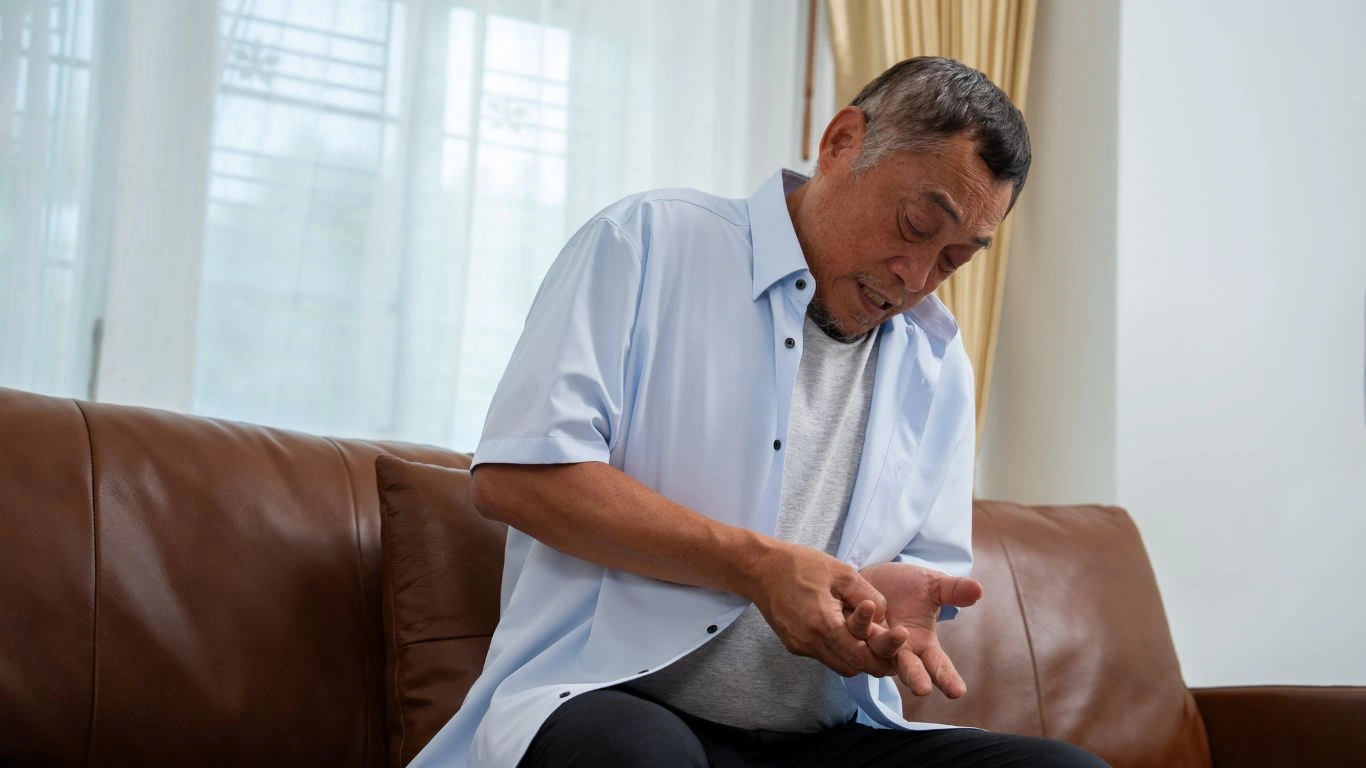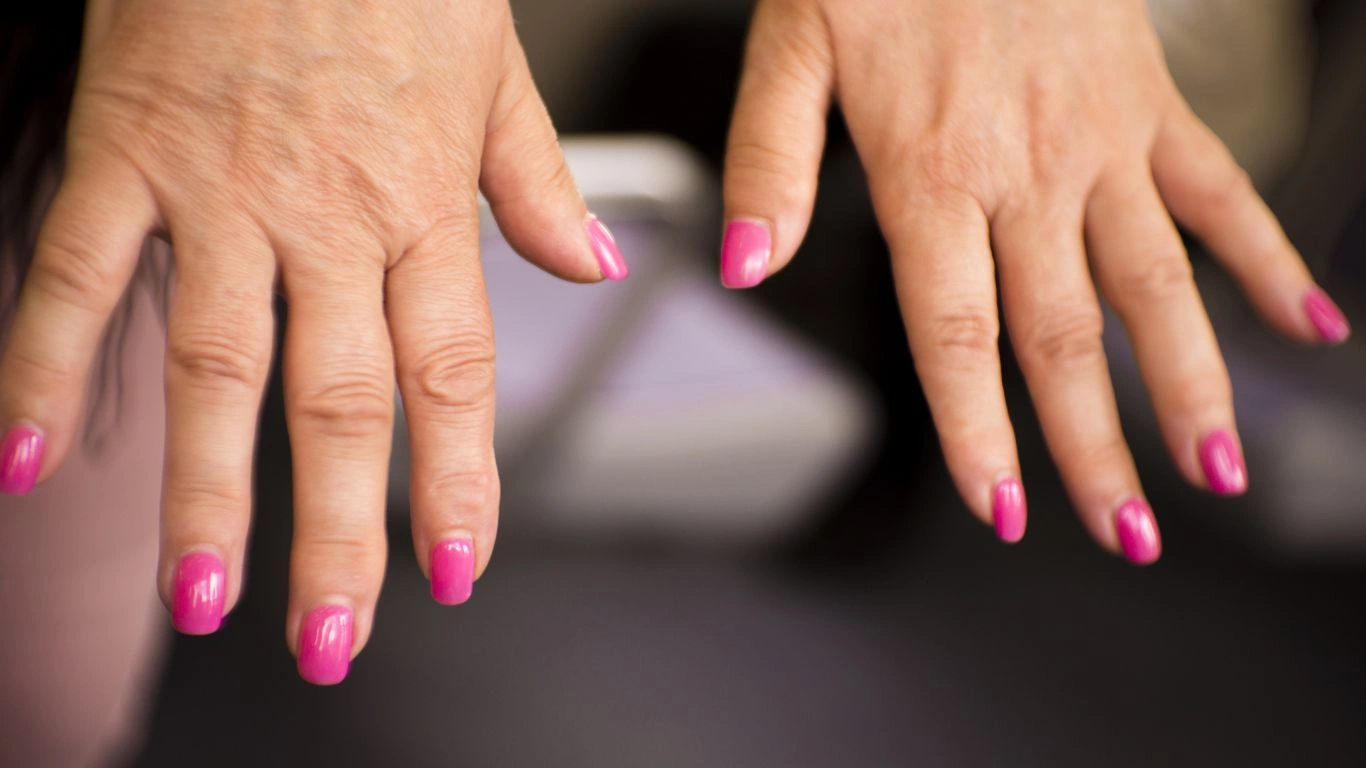“Rheumatoid Arthritis: How Stretching Can Relieve Pain and Improve Mobility”
Rheumatoid arthritis (RA) is a chronic autoimmune condition that causes inflammation in the joints, leading to pain, stiffness, and even deformities over time. As someone who has spent years working closely with patients suffering from this condition, I can tell you that it can be a challenging journey. But there’s hope! One of the best tools in managing RA is something simple, yet often overlooked: stretching exercises. Stretching is often viewed as just a way to stay limber or to warm up before a workout, but for people with rheumatoid arthritis, it can be a game-changer in both managing symptoms and improving quality of life.
The Link Between Rheumatoid Arthritis and Flexibility
When you think about rheumatoid arthritis, flexibility probably isn’t the first thing that comes to mind. In fact, the idea of stretching when your joints are inflamed might seem counterintuitive at first. But here’s the truth—maintaining and improving flexibility can play a huge role in managing the symptoms of RA.
Joint stiffness, which is one of the hallmark symptoms of rheumatoid arthritis, often makes it hard to move freely. Stretching exercises, done properly and consistently, can help to increase the range of motion in affected joints. By keeping the muscles and tendons around the joints flexible, you can reduce the discomfort caused by stiffness and prevent the muscles from becoming weak due to disuse. As someone who has worked with many RA patients, I’ve seen firsthand how even small improvements in flexibility can lead to big improvements in day-to-day functionality.
Why Stretching Matters for RA Sufferers
There’s more to stretching for RA than just easing tightness. Stretching has several other benefits that can greatly improve the overall management of the condition. Let’s dive into some of these benefits.
- Improved Joint Mobility: Regular stretching helps to keep the joints moving, which can reduce the feeling of stiffness that often accompanies RA. Improved mobility can make simple tasks, like walking or reaching for something on a shelf, feel much easier.
- Relief from Pain: By stretching, you can help to release tension in the muscles surrounding the joints. This can lead to reduced pain and discomfort, especially after periods of inactivity or after being in one position for too long.
- Reduced Muscle Atrophy: RA often leads to muscle weakness, especially when joints are inflamed and less mobile. Stretching exercises help to keep the muscles around the joints active, which can prevent muscle atrophy and maintain strength.
- Better Posture: When RA causes pain and stiffness, it’s common to develop compensatory movements, which can negatively affect posture. Stretching helps to counteract this by improving alignment and encouraging proper posture.
How Stretching Can Fit into Your RA Management Plan
Integrating stretching into your daily routine is easier than it sounds—and it doesn’t have to be complicated! In fact, I often tell my patients that the simpler the better. Consistency is key, and finding a few stretches you can do each day can make a big difference. Let’s break down how you can get started and how to incorporate stretching into your RA management plan.
Start Slow and Focus on the Basics
It’s important to start slowly when introducing stretching into your routine, especially if you’re not used to exercising regularly. If your joints are particularly inflamed or stiff, avoid pushing yourself too hard or too fast. Instead, focus on gentle movements that help to relieve the stiffness without exacerbating the pain. A few basic stretches that target the most common areas affected by RA—like the wrists, knees, and shoulders—are great starting points.
For example, wrist stretches can help reduce tension and pain in the hands and forearms, areas that are often affected by RA. You can try gently stretching the wrist by extending your arm in front of you and pulling back on the fingers with the other hand, holding for 20-30 seconds. Similarly, shoulder stretches can improve range of motion and ease discomfort in the upper body. You can do a simple shoulder roll, gently bringing your shoulders up toward your ears and then rolling them back and down in a circular motion.

Incorporating Stretching into Your Daily Routine
Consistency is key when it comes to stretching. I recommend setting aside just 10 to 15 minutes a day to focus on stretching exercises, ideally during the times when you’re feeling a little less stiff. Stretching first thing in the morning can be especially beneficial for RA patients because it helps to reduce morning stiffness and get the blood flowing. You don’t have to dedicate a huge chunk of time, but those few minutes of stretching each day can make a big impact on how you feel throughout the day.
Another tip is to incorporate stretching into other activities. For example, if you’re watching TV or reading, you can use that time to perform simple stretches without feeling like it’s a big chore. The key is to make it part of your lifestyle so it doesn’t feel like a separate task but rather a natural part of your routine.

Stretching and RA Flares
RA flares are a reality for many people living with the condition, and when they happen, you might feel like stretching is the last thing you want to do. But stretching can actually help during these times, as long as you’re mindful of your body’s signals. During a flare, it’s important to focus on gentle, pain-free movements and avoid pushing yourself too hard. Stretching can help maintain some flexibility even when your joints are inflamed, and it may reduce the severity of the flare in the long run.
As always, if you’re unsure about which stretches are best for your current condition or if you’re experiencing a particularly painful flare, don’t hesitate to reach out to your healthcare provider or physical therapist. They can help you tailor a stretching routine that works for you and ensure you’re not causing more harm than good.

Stretching Techniques That Work for Rheumatoid Arthritis
Now that we know why stretching is essential for people with rheumatoid arthritis (RA), let’s get into the specifics of how to actually do it. The right technique is key to avoiding injury and getting the most benefit from your stretches. Over the years, I’ve worked with many patients to fine-tune their approach to stretching, and I’ve seen what works best for RA. Whether you’re a newbie to stretching or looking for ways to refine your technique, I’m here to help guide you through it.
Focus on Gentle, Slow Movements
One of the most important things to keep in mind when stretching with RA is to take things slow. When joints are inflamed or painful, the last thing you want to do is rush through stretches. The goal is to gently lengthen the muscles and improve range of motion without forcing the body into uncomfortable positions. Over time, these slow, controlled movements will help reduce stiffness, ease pain, and improve flexibility.
When I work with patients, I always recommend starting with 10 to 15 minutes of stretching each day. It may sound like a small commitment, but even a few minutes can make a noticeable difference. A good rule of thumb is to focus on breathing deeply and holding each stretch for about 20 to 30 seconds. Breathe in slowly as you stretch, and exhale gently as you relax. This will help keep your body calm and reduce tension.

Target the Right Muscle Groups
With rheumatoid arthritis, certain muscle groups tend to be more affected by joint inflammation, especially in the hands, wrists, knees, and shoulders. So, it’s essential to focus on stretches that target these key areas. For example, stretching your wrists can help alleviate the stiffness that comes with inflamed joints. The hands and fingers are often affected by RA, so incorporating stretches for your fingers, hands, and wrists is crucial.
- Wrist Stretch: Extend one arm in front of you, palm facing outward. With the other hand, gently pull back on the fingers of the outstretched hand, holding the stretch for 20-30 seconds. Repeat on the other side.
- Hand Stretch: Open your hands wide, stretching the fingers apart as far as comfortable. Hold for 15-20 seconds, then relax. This helps to maintain mobility in the fingers.
- Knee Stretch: Sit on a chair with both feet flat on the floor. Extend one leg out straight and gently point your toes upward. Hold for 20 seconds, and then slowly release. Repeat on the other leg.
- Shoulder Stretch: Reach one arm across your body and hold it with the opposite arm, gently pulling it towards your chest. This stretch helps to ease stiffness in the shoulders and upper arms.
Incorporate Stretching with Other Types of Movement
Another strategy that I recommend is combining stretching with low-impact exercises like walking or swimming. These activities can help warm up the body and make it easier to stretch without straining the joints. For example, a gentle 5-10 minute walk can get your blood flowing and loosen up stiff joints, making it easier to stretch effectively afterward.
As a Rheumatology Nurse Practitioner, I’ve seen how even simple exercises can complement stretching routines. Activities like swimming, cycling, and yoga are also excellent for RA sufferers, as they can help maintain joint mobility and build strength. When these low-impact exercises are paired with stretching, you’ll get a more well-rounded approach to managing your condition.

When to Stretch and When to Rest
One of the most common questions I get from patients is: “How do I know when to stretch and when to rest?” It’s a good question. There are times when stretching can help, but there are also times when you need to give your body a break. It’s all about listening to your body and knowing when it’s time to back off.
If you’re experiencing a flare-up of rheumatoid arthritis symptoms, it’s important to avoid aggressive stretching. Flares often cause significant pain and swelling, and pushing your body too hard during this time can do more harm than good. Instead, focus on gentle movements that don’t cause pain or increase swelling. During flares, you can still stretch, but make sure to modify your routine to include shorter, lighter stretches.
Rest Is Just as Important as Stretching
Don’t underestimate the importance of rest. I always remind my patients that rest is a key component of managing RA. Overexerting yourself can increase inflammation and worsen symptoms, so make sure to balance stretching and exercise with adequate rest. Giving your body time to recover is essential for long-term success in managing RA.
Pay attention to your body’s signals, and don’t push through pain. If something doesn’t feel right or causes discomfort, it’s okay to take a break and try again later. Remember that consistency is more important than intensity. It’s better to stretch gently every day than to push yourself too hard in a single session.

Modify Stretching for Different Levels of RA Severity
RA affects everyone differently. For some, symptoms are mild, while for others, they can be more severe. That’s why it’s so important to tailor your stretching routine to fit your specific needs. If you have mild to moderate symptoms, you can likely perform a more varied stretching routine. However, if you have more severe RA, you may need to focus on gentler, more targeted stretches.
If you’re unsure where to start, I always recommend working with a physical therapist or a specialist in RA to create a personalized plan. They can help you determine the best stretches and exercises for your specific needs and limitations, ensuring that you don’t overdo it or cause additional strain on your joints.
As you progress and your condition improves, you can gradually increase the intensity of your stretches. Just remember to go at your own pace and make adjustments as necessary. RA is a lifelong condition, and managing it with stretching is about finding a routine that works for you—and sticking with it.
Additional Tips for Managing Rheumatoid Arthritis with Stretching
By now, we’ve covered the basics of stretching for rheumatoid arthritis and the importance of consistency in maintaining a stretching routine. However, there are a few more tips and tricks I’ve learned over the years that can help make stretching more effective for people living with RA. These small adjustments and insights can really enhance the benefits of your routine and support your long-term management of the condition.
Incorporate Mindfulness Into Your Stretching Routine
One aspect of stretching that is often overlooked is the mind-body connection. When you’re living with a chronic condition like rheumatoid arthritis, it’s easy to get frustrated or distracted during your stretches. However, I’ve found that being present and focused on your body’s movements can make a huge difference in the effectiveness of your routine. Mindfulness can help reduce stress, ease tension, and even make the stretching itself feel more rewarding.
Take a moment before you start your stretching routine to breathe deeply and clear your mind. As you stretch, pay attention to how your body feels. Notice any areas of discomfort, tightness, or relief. The more you can tune in to your body’s signals, the better you’ll be able to modify your stretches and prevent injury. It’s about creating a space where your body and mind work together to manage the symptoms of RA.

Work with a Professional to Tailor Your Stretching Routine
As I’ve mentioned before, not everyone with rheumatoid arthritis experiences the same symptoms or limitations. That’s why it’s so helpful to work with a professional who can tailor your stretching routine to your specific needs. A physical therapist, occupational therapist, or even a trained personal trainer with experience in RA can be a great asset. They can assess your joints and muscles and help you figure out which stretches will provide the most benefit.
One of the things I often tell my patients is that just because a stretch works for one person doesn’t mean it’s the right one for you. For example, some stretches might put undue pressure on certain joints, which could make inflammation worse. A professional can show you how to perform stretches correctly and modify movements based on your individual condition. They can also help you progress your routine safely as your flexibility and strength improve.
Stay Hydrated and Nourished
Stretching may seem like a physical activity that only involves muscles and joints, but the truth is that your overall health plays a huge role in how effectively your body responds to stretching exercises. Proper hydration and nutrition are essential components of any exercise routine, especially for those with RA.
When you’re dehydrated, your muscles can become stiff and fatigued more easily. That stiffness can increase discomfort during stretching. Likewise, good nutrition supports joint health, reduces inflammation, and gives your body the fuel it needs to repair and maintain muscle tissue. For RA patients, staying hydrated and eating a balanced diet rich in anti-inflammatory foods can help maximize the benefits of stretching exercises.
Make Stretching a Lifelong Habit
Stretching should become a regular part of your routine, not just something you do on a whim or when you’re experiencing pain. The more consistent you are with stretching, the better your body will respond over time. I’ve worked with so many patients who started stretching regularly and were amazed at how much it helped reduce their stiffness and pain.
Consider stretching at the same time each day to make it easier to remember. For some, this might be first thing in the morning to reduce morning stiffness, while for others, stretching in the evening can help wind down after a busy day. Regardless of when you stretch, the goal is to make it a habit. Even if you don’t feel like stretching one day, I encourage you to do it anyway—even if it’s just for five minutes. Those few minutes can have a lasting impact on your joint mobility and overall comfort.

References and Further Reading
If you’re looking to dive deeper into the science of rheumatoid arthritis and how stretching can help, here are some great resources to explore:
- American College of Rheumatology – This is a trusted resource for in-depth information on RA and treatment options.
- National Institutes of Health (NIH) – For scientific studies and research related to RA and exercise therapies.
- Arthritis Foundation – Offers excellent advice and tips on managing rheumatoid arthritis through exercise and lifestyle changes.
Disclaimer
While the advice and stretching techniques shared in this article have been carefully curated based on years of experience, please remember that everyone’s experience with rheumatoid arthritis is different. It’s always a good idea to consult with your healthcare provider before starting any new exercise routine, especially if you have severe RA or are experiencing a flare-up. Your healthcare provider can help guide you on which exercises are safe and effective for your specific condition.
Additionally, if you experience any new or increased pain while stretching, stop immediately and consult with your healthcare professional. The goal is to manage RA symptoms, not to exacerbate them.

Tarra Nugroho is a dedicated Nurse Practitioner with a strong foundation in family and preventive care. She brings both compassion and clinical expertise to her practice, focusing on patient-centered care and health education. As a contributor to Healthusias.com, Tarra translates medical knowledge into clear, empowering articles on topics like women’s health, chronic disease management, and lifestyle medicine. Her mission is simple: help people feel seen, heard, and informed—both in the clinic and through the content she creates. When she’s not caring for patients, Tarra enjoys weekend hikes, plant-based cooking, and curling up with a good health podcast.






